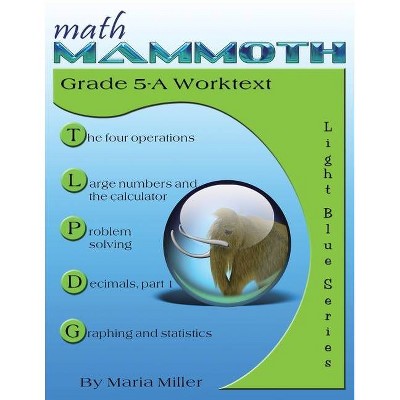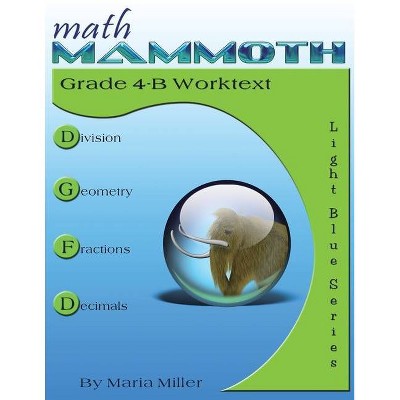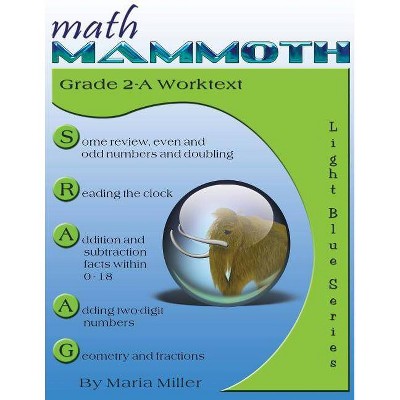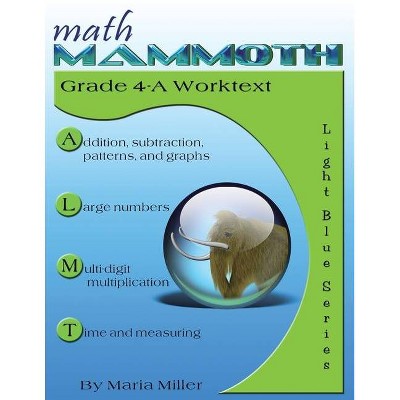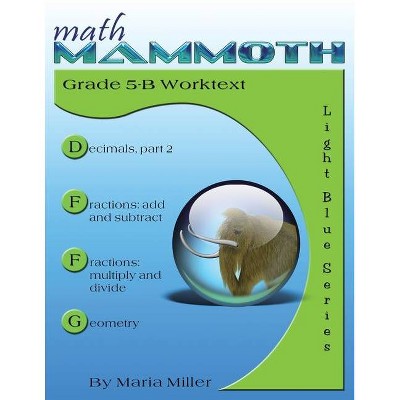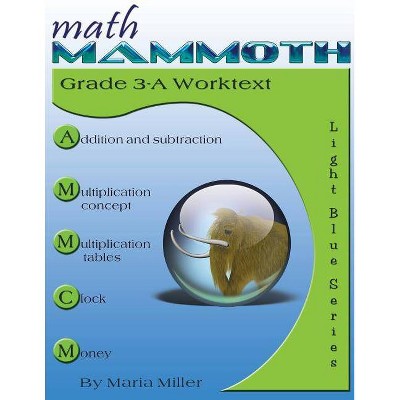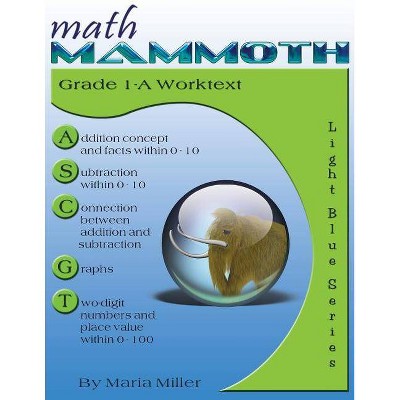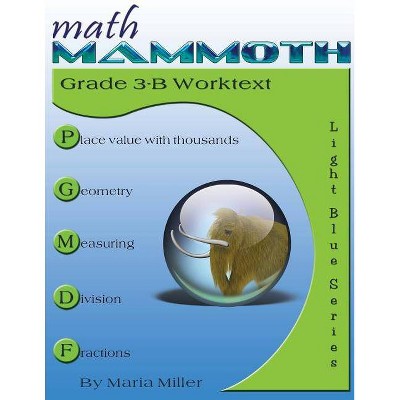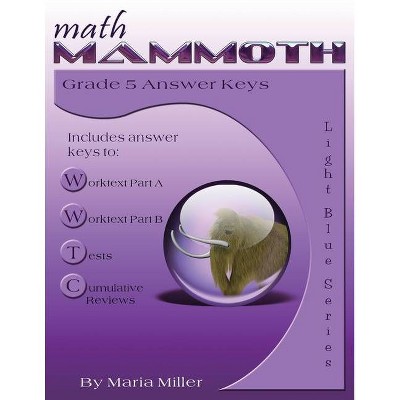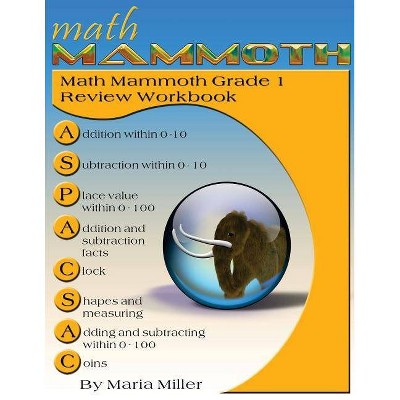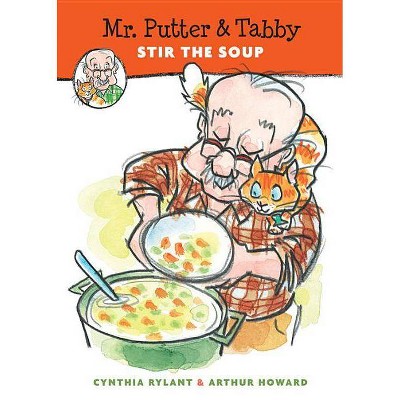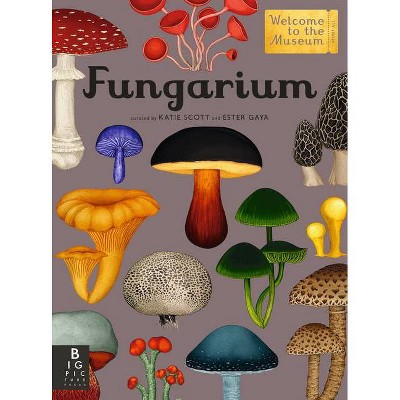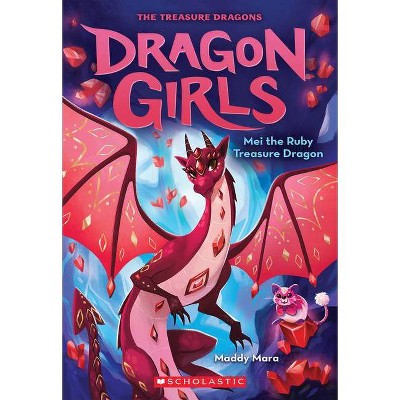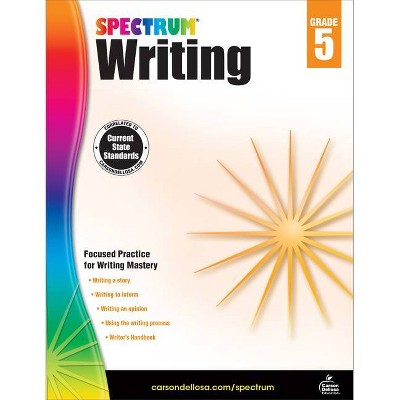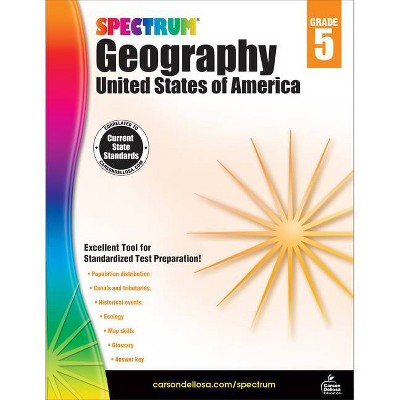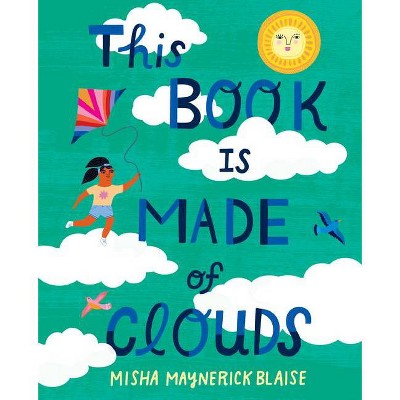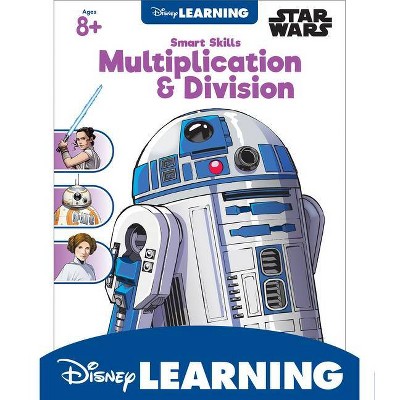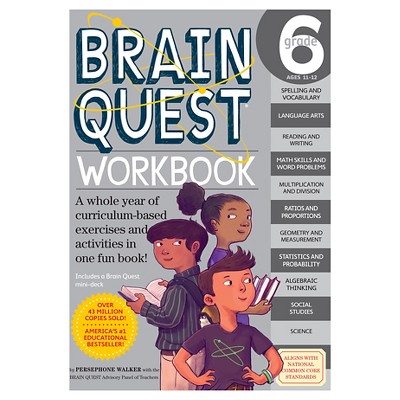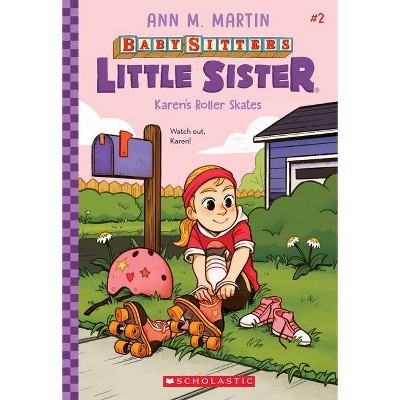Math Mammoth Grade 6-B Worktext - by Maria Miller (Paperback)
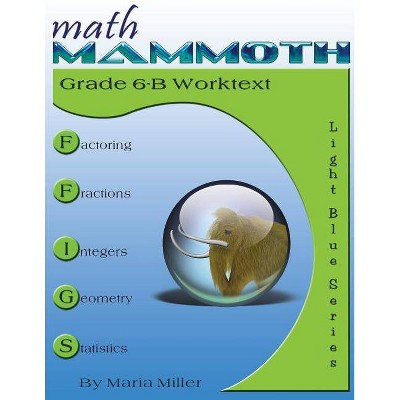
Similar Products
Products of same category from the store
AllProduct info
<p/><br></br><p><b> About the Book </b></p></br></br>Math Mammoth Grade 6-B Worktext is the second student book in Math Mammoth grade 6 curriculum, meant for the latter half of 6th grade. It covers prime factorization, GCF, LCM, fractions, integers, geometry, and statistics. The curriculum meets and exceeds the Common Core Standards. This is the full-color version.<p/><br></br><p><b> Book Synopsis </b></p></br></br><p><strong>Math Mammoth Grade 6-B Worktext </strong>is the second student book in Math Mammoth grade 6 curriculum, meant for the latter half of 6th grade. It covers using factoring to help to calculate the greatest common factor (GCF) and least common multiple (LCM); addition, subtraction, multiplication, and division of fractions; integers (negative numbers) and graphing in the coordinate plane; finding the area of polygons; and statistical distributions.</p><p>Chapter 6 first reviews prime factorization and then teaches students two new concepts: the greatest common factor and the least common multiple. We also apply those concepts factor to simplify fractions and to find common denominators for adding fractions.</p><p>In Chapter 7, students first review addition, subtraction, and multiplication of fractions from fifth grade. Then we focus on a new topic: the division of fractions. The chapter also includes ample practice in solving problems with fractions.</p><p>Chapter 8 introduces students to integers (signed numbers). They plot points in all four quadrants of the coordinate plane, reflect and translate simple figures, and learn to add and subtract with negative numbers. (Multiplication and division of integers will be studied in 7th grade.)</p><p>The next chapter, Geometry, focuses on calculating the area of polygons. After a brief review of terminology for triangles and quadrilaterals and drawing fundamentals, this new topic is presented simply in a logical progression: first, the area of a right triangle; next, the area of a parallelogram; then, the area of any triangle; and finally, the area of a polygon. After that, students learn how to use nets of simple solids to calculate their surface area. Lastly, we turn to the concept of volume. Students have already learned to find the volumes of rectangular prisms in 5th grade. Now they calculate the volumes of rectangular prisms with fractional edge lengths.</p><p>The final chapter is about statistics. Beginning with the concept of a statistical distribution, students learn about measures of center and measures of variability. They also learn how to make dot plots, histograms, boxplots, and stem-and-leaf plots as ways to summarize and analyze distributions.</p><p><strong>Features</strong></p> <ul> <li>Math Mammoth focuses on <strong>conceptual understanding</strong>. It explains the "WHY", so your children can understand the math, not just learn "HOW" to do it.</li> <li>Concepts are often explained with <strong>visual models</strong>, followed by exercises using those models. These visual models can take the place of manipulatives for many children; however, it is very easy to add corresponding manipulatives to the lessons if so desired.</li> <li>The curriculum is <strong>mastery-oriented</strong>. This means it concentrates fairly long on a topic, delving into its various aspects. This promotes conceptual understanding, as opposed to spiral curricula that often tend to jump from topic to topic too much.</li> <li><strong>Very little teacher preparation</strong> is required.</li> <li>The curriculum has no separate teacher's manual nor is it scripted. The introduction to each chapter has some notes for the teacher concerning the material in the chapter. All the instruction is written directly to the student in the worktext, and there also exist accompanying videos where you can see Maria herself teach the material.</li> <li>After each chapter introduction, you will find a list of Internet links and resources (games, quizzes, animations, etc.) that can be used for fun, illustrations, and further practice.</li> </ul> <p>This is the full-color version of the worktext. Please note that it does not include the answers; they are sold as a separate book.</p><p/><br></br><p><b> Review Quotes </b></p></br></br><br><p>I am using 6th and 7th grade books for my 7th grade daughter who is homeschooling this year. I love that your curriculum corresponds to state standards so when my daughter goes back to school she not be behind. My daughter has gone from a student who did not like math to one who does math first thing in the morning! Thanks again!!<br /> <br /> Adriane Orcutt-Fraser</p><br>
Price History
Price Archive shows prices from various stores, lets you see history and find the cheapest. There is no actual sale on the website. For all support, inquiry and suggestion messagescommunication@pricearchive.us
